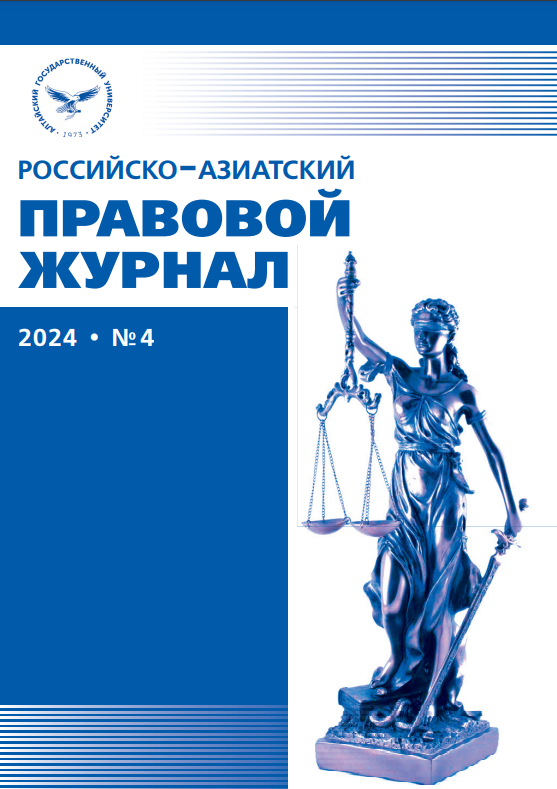THE ROLE OF CRYPTOCURRENCIES IN TERRORIST FINANCING
УДК 343.9.01 ББК 67.73
Abstract
The development of the Internet and electronic devices has radically changed all spheres of human life,in addition to the positive aspect, digitalization has led to an increase in the number of crimes committedusing the Internet. Terrorists were among the first to introduce new technologies, who took advantage ofdigitalization to increase their profits. Terrorists have turned their attention to cryptocurrency, consideringit as a digital means of payment. For them, it has a number of attractive features such as: pseudonymity,accessibility, high transaction speed, easy storage and translation. Currently, law enforcement agenciesuse direct and indirect deanonymization, distribution analysis, quantitative analysis, time analysis, andtransactional network analysis. The article examines cryptocurrency as a tool for financing terrorism, givingexamples of positive experience of law enforcement agencies, which can help in improving the legislativesystem and assist in solving such crimes.
Downloads
References
Доклад Содружества наций от 3 февраля 2016 г. // The commonwealth. URL: http:// thecommonwealth.org/sites/default/files/pressrelease/documents/P14195_ROL_Virtual_Currencies _D_Tait_V5_LoRes.pdf.
О противодействии терроризму: Закон Российской Федерации от 6 марта 2006 г. №35-ФЗ // Российская газета. 2006.
Росфинмониторинг фиксирует факты финансирования терроризма с использованием криптовалют. 21.03.2021. Интервью заместителя руководителя Росфинмониторинга Германа Негляда. URL: https://tass-ru.turbopages.org/tass.ru/s/ekonomika/10978989.
Мелкумян К.С. ФАТФ в противодействии финансированию терроризма (специфика подхода) // Вестник МГИМО-Университета. 2014. 88 c.
Martin S Navias, Finance & Security: Global Vulnerabilities, Threats and Responses. London: C Hurst & Co., 2019.
Jessica Davis, Illicit Money: Financing Terrorism in the 21st Century. London: Lynne Rienner, 2021.
Nick Ridley, Terrorist Financing: The Failure of Counter Measures. Cheltenham: Edward Elgar, 2012.
Copyright (c) 2024 А.В. Рощупкина

This work is licensed under a Creative Commons Attribution 4.0 International License.
Russian-Asian Law Journal is a golden publisher, as we allow self-archiving, but most importantly we are fully transparent about your rights.
Authors may present and discuss their findings ahead of publication: at scientific conferences, on preprint servers, in public databases, and in blogs, wikis, tweets, and other informal communication channels.
Russian-Asian Law Journal allows authors to deposit manuscripts (currently under review or those for intended submission) in non-commercial, pre-print servers such as ArXiv.
Authors who publish with this journal agree to the following terms:
- Authors retain copyright and grant the journal right of first publication with the work simultaneously licensed under a Creative Commons Attribution License that allows others to share the work with an acknowledgement of the work's authorship and initial publication in this journal.
- Authors are able to enter into separate, additional contractual arrangements for the non-exclusive distribution of the journal's published version of the work (e.g., post it to an institutional repository or publish it in a book), with an acknowledgement of its initial publication in this journal.
- Authors are permitted and encouraged to post their work online (e.g., in institutional repositories or on their website) prior to and during the submission process, as it can lead to productive exchanges, as well as earlier and greater citation of published work (See The Effect of Open Access).








